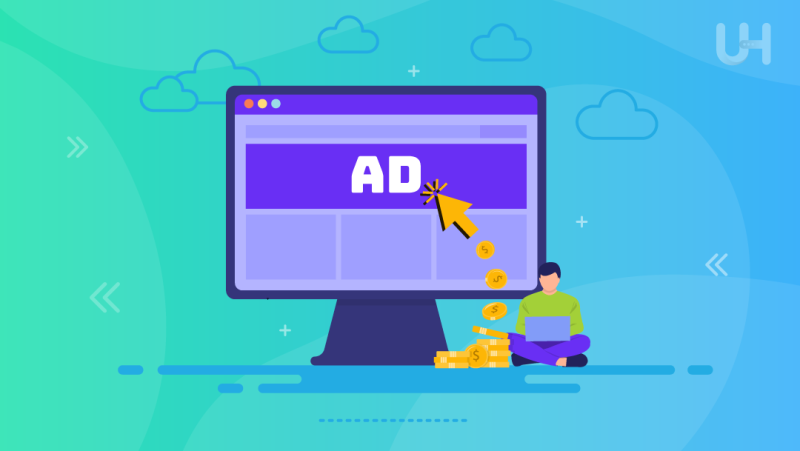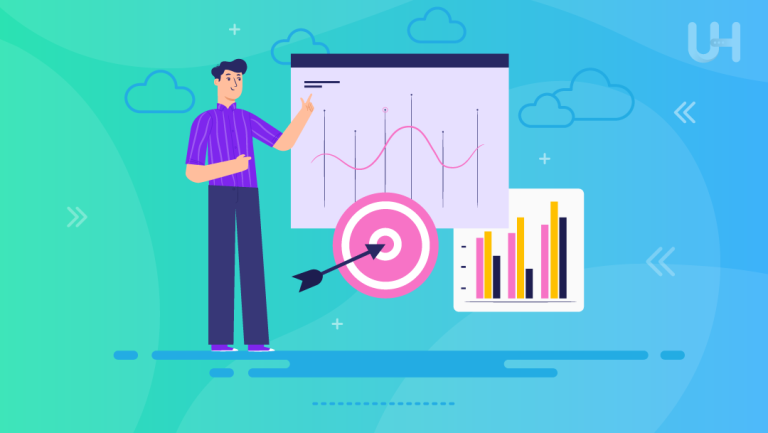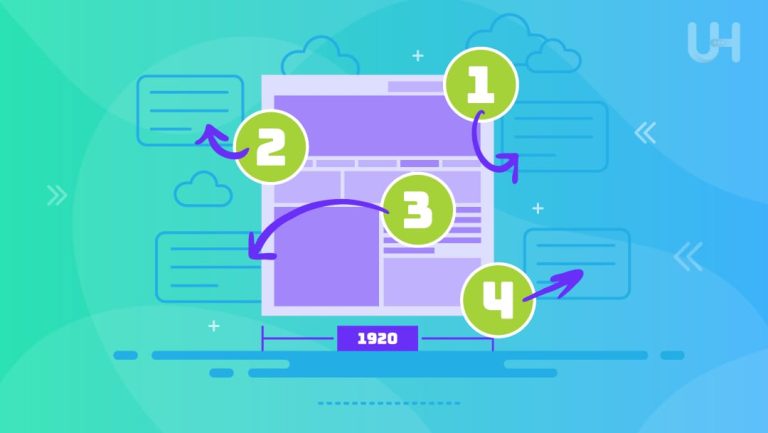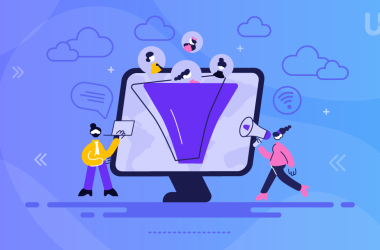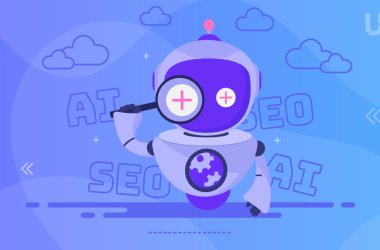Today’s world has moved to a digital space where advertising has taken a step higher, with many online strategies being created. Paid advertising has a wide range, from search engines to social media promotions, thus making it very fast and productive for businesses to hit the right target markets.
Paid advertising provides instant visibility and allows you to be very specific in your targeting, unlike organic methods that build visibility over time. In this blog, we will help you understand what paid advertising is and how to leverage it effectively. If you are a business owner or a marketer, this guide will help you understand the basics of paid advertising and ways to make it work for you.
What is Paid Advertising?
Paid Advertising involves an investment into the monetary value of products or services to be marketed across the digital space. The focus is on trying to acquire instant visibility within the online space attracting target traffic toward a business. The crux of the concept lies in the fact that businesses pay for ad placements that could range from search engine results and social media feeds to even pop-up web ads.
Explanation of Paid Advertising: Paid advertising encompasses several formats, including:
- Search Advertising: Ads that turn up in search results pages on account of keywords. Such is the case with Google Ads, which lets businesses with e-commerce website hosting bid on phrases and keywords so their ads would pop up anytime users did a similar search.
- Social Media Ads: The ads also appear on social networking sites like Facebook, Instagram, Twitter, and LinkedIn. For targeting, ads can focus demographically according to user data or other interests and behaviors.
- Display Advertising: This includes all banner ads, video ads, or other formats that will show up on VDS hosting websites and apps. And very often, these are served to users who have been on their site or otherwise interacted with the brand.
- Native advertising: Paid media that looks and acts like the content of the platform it appears in, both in form and function. The result is much less intrusive.
- Affiliate Marketing: Businesses here pay affiliates who promote their products. Affiliates are paid depending on fix compensation structure where the payouts are released based on the sales or even leads they might bring along through their efforts in marketing.
Difference Between Paid Advertising and Organic Marketing
Paid Advertising
- Immediate Results: Paid advertisements can be used to drive traffic to your business immediately. Once a campaign gets launched, ads start to appear to the targeted audience, with results many times showing in no time.
- Control and Precision: You can control Ad placements in businesses in terms of location and how they show up. They also allow targeting at very granular levels-from place to interest to behavior.
- Scalability: Campaigns can be performance-scaled up or down, bounded by a certain budget. This is where businesses can adjust spending to have their ads reach more or less.
- Costs: Paid media space has to be bought, and the costs can vary on a multitude of factors, including but not limited to the platform, ad format, and competitiveness of the advertising space.
Organic Marketing
- Long-term Growth: Organic marketing efforts like SEO and content creation have their visibility and engagement going up with time. Results are built up over time.
- Organic Credibility and Trust: It tends to develop credibility thereby gaining the trust of the audience. For instance, high rankings in the search engines through SEO are considered evidence of better authority and relevance.
- No Direct Costs: Organic marketing does not have the direct cost of placements, but it involves investments in content creation, SEO, and other activities that just so happen to support the long-term growth.
- Consistency: It requires more or less constant effort and consistency with organic means to maintain activity. Regular updating and engaging will keep the visibility going at the rate of interaction.
Types of Paid Advertising
Search Engine Advertising
In the pay-per-click model, an enterprise pays a fixed amount of money every time a user clicks on its ad. It allows them to target their own keyword phrases related to their products and services and appear on the SERPs. Pay-per-click ads work effectively for immediate website traffic since an ad is shown to users who are actually searching for related terms.
Examples
- Google Ads: Google Ads, earlier known as Google AdWords, is the most prominent platform using the PPC model. This is a great opportunity to create ads that may appear in Google’s SERPs and all over its huge network of partner websites. The advertisers bid on the keywords, and their ads show up based on relevance and the actual amount that was bid. Ads come in text snippet forms or even graphically more engaging display ads.
- Bing Ads: Now known as Microsoft Advertising, this does the same thing as Google Ads, but on the search engine Bing and its affiliate sites, which include Yahoo. This is a cheaper alternative, as there is normally less competition and cost per click compared to Google Ads, thus allowing businesses to get the desired quota of users.
How It Works
- Bidding on Keywords: Advertisers select relevant keywords and set bids on how much they are willing to pay per click. The amount bid, combined with the quality score (which assesses the relevance of the ad and landing page), determines the ad’s position on the SERPs.
- Ad Placement: Ads are placed based on a combination of bid amount and quality score. Higher bids and better-quality ads are more likely to appear in top positions on the search results page. The auction system used by search engines ensures that ads are shown to users who are most likely to be interested in the advertised products or services.
Get Started with Effective Paid Advertising Today!
Ready to boost your business with powerful paid advertising strategies? Take your campaigns to the next level with Ultahost’s SEO VPS hosting, designed to optimize performance and drive results.
Social media advertising involves placing ads on platforms where users engage with content and interact with others. These platforms offer diverse ad formats and sophisticated targeting options to help businesses reach their ideal audience.
Types of Ads
- Sponsored Posts: These are regular posts that businesses pay to promote to a larger audience beyond their own followers. They appear in users’ newsfeeds or timelines and blend with organic content, making them more engaging.
- Carousel Ads: Carousel ads allow businesses to showcase multiple images or videos within a single ad. Users can swipe through the carousel to view different products, features, or offers, providing a dynamic and interactive ad experience.
- Stories: Full-screen ads displayed in the Stories section of platforms like Instagram, Facebook, and Snapchat. Stories ads are temporary and disappear after 24 hours, offering a more immersive and engaging format that can capture users’ attention effectively.
Targeting Options
- Demographics: You can target Ads on demographic factors such as age, gender, location, and education level. This helps businesses reach users who match their ideal customer profile.
- Interests: Platforms allow targeting based on users’ interests and hobbies, which are from their activity and engagement. This helps ensure that ads are relevant to users’ preferences.
- Behaviors: Target users based on their online behaviors, such as recent searches, purchasing patterns, or interactions with similar content. Behavioral targeting helps reach users who are more likely to be interested in the advertised products or services.
Display Advertising
Display advertising involves placing visual ads on websites and apps to attract users’ attention. These ads come in various formats and are designed to be eye-catching and engaging.
Types
- Banners: Banner ads are rectangular ads that appear at the top, bottom, or sides of web pages. They can be static images, animated graphics, or interactive elements that encourage user engagement.
- Interstitials: Full-screen ads that appear between content pages or during transitions, such as when a page is loading. They provide a high-impact ad experience by occupying the entire screen.
- Video Ads: Short video clips displayed on websites or within other video content. These ads can be skippable or non-skippable and often aim to engage users with dynamic content.
Placement Options
- Websites: Display ads can be placed on specific websites or through ad networks that serve ads across multiple sites. They can be targeted based on the site’s content, user demographics, or browsing behavior.
- Apps: Ads are shown within mobile apps and can appear as banners, interstitials, or in-app video ads. This placement leverages the app’s audience and user behavior for more targeted advertising.
Native Advertising
Native advertising refers to ads that are design to blend seamlessly with the content on the platform where they appear. Unlike traditional ads, native ads match the format and style of the surrounding content, making them less intrusive and more engaging.
How Native Ads Blend with Content
- Integration: Native ads integrate into the content stream of a website or app. For example, a sponsored article on a news website looks and feels like other articles and in-stream video ads resemble regular video content.
- Content Alignment: Native ads align with the platform’s design and user experience, ensuring that they do not disrupt the user’s interaction with the content. This integration makes native ads more likely to be viewed and engaged with.
Benefits and Considerations
- Benefits: Native ads often achieve higher engagement rates and lower bounce rates because they are less disruptive and more relevant to users. They blend with the content, making users more likely to interact with them.
- Considerations: Ensuring transparency is crucial to avoid misleading users. Clearly labeling native ads helps maintain trust and comply with advertising regulations, preventing confusion about the nature of the content.
Affiliate Marketing
Affiliate marketing involves partnering with individuals or organizations (affiliates) who promote a business’s products or services. Affiliates earn a commission for each sale or lead they generate through their marketing efforts.
How Affiliates Earn Commissions
- Commission Structure: Affiliates are on different models, such as cost-per-sale (CPS), where they earn a commission for each sale made through their referral link; cost-per-click (CPC), where they earn for each click on their referral link; or cost-per-action (CPA), where they earn for specific actions like form submissions or sign-ups.
Examples of Affiliate Programs and Networks
- Amazon Associates: Amazon’s affiliate program allows affiliates to promote a wide range of products available on Amazon’s platform. Moreover, affiliates earn commissions on sales generated through their referral links.
- ShareASale: An affiliate marketing network that connects merchants with affiliates. It offers a variety of programs for different products and services, allowing affiliates to choose from a broad range of options.
- CJ Affiliate: A global affiliate marketing network providing access to numerous affiliate programs and partnerships. It caters to various industries and product categories, offering affiliates opportunities to earn commissions by promoting diverse products and services.
Maximize Your Earnings with Paid Advertising!
Ready to take advantage of paid advertising and boost your income? Join the Ultahost Affiliate Program and start earning commissions by promoting top-tier hosting services.
Benefits of Paid Advertising
The top benefits of Paid Advertising are:
Immediate Results
One of the most significant advantages of paid advertising is its ability to deliver immediate results. Once a campaign is launched, ads start appearing to users almost instantly, driving traffic to your website or landing page. This rapid visibility helps businesses quickly attract potential customers and generate leads, which is particularly valuable for time-sensitive promotions or new product launches. Unlike organic methods, which may take weeks or even months to build momentum, paid advertising provides a swift pathway to reaching your audience.
Targeted Reach
Paid advertising offers advanced targeting capabilities, allowing you to reach specific demographics and user interests with precision. Platforms like Google Ads and social media networks provide detailed targeting options, enabling you to tailor your ads based on factors such as:
- Demographics: Age, gender, location, education level, and more.
- Interests: Users’ hobbies, interests, and lifestyle choices.
- Behaviors: Online activities, purchasing habits, and engagement with similar content.
This level of targeting ensures that your ads are shown to users who are most likely to be interested in your products or services, increasing the efficiency of your marketing spend and improving the chances of conversion.
Measurable Performance
Paid advertising allows for precise measurement and analysis of campaign performance through various metrics and key performance indicators (KPIs). Some crucial metrics include:
- Click-Through Rates (CTR): The ratio of users who click on your ad in comparison to the number of times it is appearing. A high CTR indicates that your ad is compelling and relevant to your audience.
- Conversion Rates: The percentage of users who complete a desired action, such as making a purchase or filling out a form, after interacting with your ad. High conversion rates demonstrate the effectiveness of your ad in driving user actions.
These metrics provide valuable insights into the effectiveness of your campaigns, allowing you to make data-driven decisions and optimize your advertising strategies for better results.
Scalability
Paid advertising offers significant flexibility and scalability, enabling you to adjust your budget and targeting parameters based on campaign performance and business needs. You can:
- Increase or Decrease Budget: Adjust your spending based on the performance of your ads. If a campaign is performing well, you can scale up your budget to reach a larger audience. Conversely, you can reduce spending if the results are not meeting expectations.
- Refine Targeting: Modify targeting criteria to focus on different demographics, interests, or behaviors as needed. This adaptability allows you to optimize your campaigns continually and respond to changes in market conditions or audience behavior.
This scalability ensures that your advertising efforts can grow alongside your business and adapt to changing objectives, maximizing the return on your investment.
How Paid Advertising Works
Let’s discuss the working of paid advertising in detail:
Campaign Creation
The first step in any paid advertising campaign is to establish clear objectives and goals to achieve. This involves defining what you want to achieve with your campaign, such as increasing website traffic, generating leads, boosting sales, or building brand awareness. Setting specific, measurable, achievable, relevant, and time-bound (SMART) goals helps guide the campaign strategy and ensures that all efforts are aligned with your business objectives.
Budgeting and Bidding
Budgeting involves setting a total amount you are willing to spend on your advertising campaign. This budget can allocate daily, weekly, or monthly, depending on your campaign duration and objectives. Moreover, establishing a bid strategy is also essential for managing how much you are willing to pay for ad placements. Effective budgeting and bidding help control costs while maximizing the impact of your ads.
Types of Bidding
- Cost-Per-Click (CPC): You pay each time a user clicks on your ad. This model is useful for driving traffic to your website.
- Cost-Per-Impression (CPM): You pay for every 1,000 impressions (views) of your ad. CPM is often used for brand awareness campaigns where the goal is to increase visibility rather than direct clicks.
Ad Creation
Creating compelling ad copy and visuals is crucial for capturing users’ attention and driving engagement. Effective ads should:
- Highlight Key Benefits: Clearly communicate the value proposition and unique selling points.
- Use Strong Calls-to-Action (CTAs): Encourage users to take specific actions, such as “Shop Now,” “Sign Up,” or “Learn More.”
- Design Eye-Catching Visuals: Use high-quality images, videos, or graphics that align with your brand and resonate with your target audience.
A/B Testing and Optimization: A/B testing involves creating multiple versions of an ad to test different elements, such as headlines, images, or CTAs. By comparing the performance of these variations, you can determine which version resonates best with your audience. Moreover, optimization involves making data-driven adjustments to improve ad performance based on test results and performance metrics.
Monitoring and Analysis
Once your campaign is live, it’s important to monitor performance metrics to assess its effectiveness. Key metrics include:
- Click-Through Rate (CTR): In Click-Through Rate, you measure the percentage of users who click on your ad after seeing it.
- Conversion Rate: Tracks the percentage of users who complete a desired action after interacting with your ad.
- Cost-Per-Click (CPC): Indicates how much you are paying for each click on your ad.
- Return on Ad Spend (ROAS): Evaluates the revenue generated from the campaign relative to the amount spent.
Making Data-Driven Adjustments: Regularly analyzing performance data allows you to make informed decisions and adjust your campaign strategy. Based on the insights gathered, you can refine targeting options, adjust bidding strategies, update ad copy, or modify visuals to enhance overall campaign performance. Continuous optimization ensures that your advertising efforts are aligned with your goals and that you achieve the best possible results from your investment.
Challenges of Paid Advertising
Here are some challenges related to paid advertising:
Cost Management
One of the primary challenges in paid advertising is managing and optimizing your ad spend. Effective cost management involves:
- Setting Realistic Budgets: Establish a budget that aligns with your campaign goals and expected ROI. Moreover, it’s crucial to allocate funds strategically across various platforms and ad types to maximize impact.
- Monitoring Spend: Continuously tracking your ad spend to ensure it stays within budget. This includes keeping an eye on daily or weekly expenditure and adjusting as needed.
- Optimizing Ad Spend: Regularly reviewing performance metrics to identify high-performing ads and reallocate budget towards them. Using bidding strategies effectively, such as automated bidding or manual adjustments, can help control costs and improve efficiency.
Ad Fatigue
Ad fatigue occurs when users are repeatedly exposed to the same ads, leading to decreased engagement and effectiveness. To combat ad fatigue:
- Refresh Ad Creative: Regularly update ad copy, visuals, and formats to keep content fresh and engaging. Implement A/B testing to find new combinations that resonate with your audience.
- Frequency Capping: Set limits on how often your ads appear to the same users to prevent overexposure. Most ad platforms offer frequency capping options to help manage this.
- Diversify Ad Channels: Utilize multiple advertising platforms and formats to reach your audience through different touchpoints, reducing the risk of ad fatigue.
Competition
In a competitive ad landscape, standing out from competitors can be challenging. Strategies to navigate this include:
- Differentiation: Craft unique and compelling ad messages that highlight your value proposition and differentiate your brand from competitors. Focus on what makes your offering distinct.
- Targeting Precision: Leverage advanced targeting options to reach specific audience segments who are most likely to be interested in your products or services. This can help reduce competition and improve ad relevance.
- Bid Management: Stay informed about your competitors’ bidding strategies and adjust your own bids and budgets accordingly. Moreover, use tools and analytics to monitor competition and optimize your approach.
Ad Blockers
Ad blockers are for individuals to avoid intrusive ads, which can significantly impact the visibility and performance of your paid advertising campaigns. To address this challenge:
- Embrace Native Advertising: Native ads blend with content and are less likely to get block by ad blockers. They offer a more seamless user experience and can improve engagement.
- Focus on High-Quality Content: Create valuable and evergreen content that provides a positive user experience. High-quality ads are less intrusive and may avoid blocking.
- Utilize Other Channels: Explore alternative advertising methods such as influencer marketing, content marketing, or email campaigns that are less affected by ad blockers. This helps diversify your advertising strategy and maintain reach.
By understanding and addressing these challenges, businesses can optimize their paid advertising efforts and achieve more effective and efficient results.
Best Practices for Effective Paid Advertising

Define Clear Objectives
A successful paid advertising campaign starts with clearly defined objectives. Setting specific and measurable goals provides a roadmap for your campaign and helps evaluate its success. Consider the following when defining objectives:
- Specificity: Identify precise outcomes you want to achieve, such as increasing website traffic by 30%, generating 100 leads, or boosting sales by 20%.
- Measurability: Use metrics and key performance indicators (KPIs) to track progress and measure success. Moreover, establish benchmarks and performance targets to gauge the effectiveness of your ads.
- Relevance: Ensure that your goals align with your overall business objectives and marketing strategy. Relevant goals help focus efforts and resources on achieving outcomes that drive meaningful results.
Target Audience Research
Effective paid advertising relies on reaching the right audience. Conduct thorough research to identify and understand your target audience:
- Demographic Analysis: Determine key demographic factors such as age, gender, location, income level, and education. This helps tailor your ads to resonate with the audience’s characteristics.
- Psychographic Profiling: Understand your audience’s interests, values, lifestyle, and behavior. This insight allows you to create ads that align with their preferences and needs.
- Behavioral Insights: Analyze user behavior patterns, such as browsing history, purchasing habits, and engagement with similar content. Furthermore, this helps refine targeting and improve ad relevance.
Create Compelling Ads
Compelling ads capture attention and drive engagement. To create effective ad content:
- Clear Messaging: Communicate your value proposition clearly and succinctly. Highlight the key benefits and features of your product or service.
- Strong Call-to-Action (CTA): Include a persuasive CTA that encourages users to take the desired action, such as “Buy Now,” “Learn More,” or “Sign Up.”
- Visual Appeal: Use high-quality images, videos, or graphics that are visually engaging and align with your brand. Ensure that visuals are relevant to the ad message and resonate with the target audience.
- Ad Copy: Write concise and compelling ad copy that captures attention and conveys your message effectively. Use language that speaks directly to your audience’s needs and desires.
Optimize Landing Pages
The effectiveness of your paid ads is closely link to the performance of your landing pages. Optimize landing pages to improve conversion rates:
- Consistency: Ensure that the landing page content aligns with the ad message and offers a seamless user experience. Moreover, consistent messaging helps reinforce the ad’s value proposition.
- User Experience: Design landing pages to be user-friendly, with clear navigation, fast loading times, and mobile responsiveness. A positive user experience reduces bounce rates and increases the likelihood of conversion.
- Conversion Elements: Include prominent and easy-to-complete forms, clear CTAs, and relevant offers. Make it simple for users to take the desired action, such as making a purchase or signing up for a newsletter.
Monitor and Adjust
Ongoing monitoring and adjustment are crucial for optimizing paid advertising campaigns:
- Performance Tracking: Use analytics tools to track key metrics such as click-through rates (CTR), conversion rates, and return on ad spend (ROAS). Regularly review these metrics to assess campaign performance.
- Data-Driven Decisions: Analyze performance data to identify trends, strengths, and areas for improvement. Make informed decisions based on insights to enhance campaign effectiveness.
- Continuous Optimization: Adjust ad targeting, bidding strategies, ad creative, and budget allocation based on performance data. Moreover, regularly test new approaches and refine strategies to improve results and achieve your campaign goals.
By following these best practices, you can enhance the effectiveness of your paid advertising campaigns, drive better results, and achieve your marketing objectives.
Conclusion
Paid advertising is a powerful tool for achieving fast visibility, targeted reach, and measurable results. By leveraging various types of ads—like search engine, social media, and display ads—you can effectively meet your marketing goals.
While challenges such as cost management and ad fatigue exist, following best practices—defining clear objectives, understanding your audience, creating compelling ads, and optimizing landing pages—will help you maximize your investment. With continuous monitoring and adjustment, online paid advertising can drive significant results and support your business’s growth.
Paid advertising can help grow your business quickly. To keep your communication professional and secure, check out Ultahost’s best Email Hosting plan. Start improving your marketing and communication today!
FAQ
What is paid advertising?
Paid advertising involves paying for ad placements on digital platforms like search engines, social media, and websites to promote products or services.
How does paid advertising differ from organic marketing?
Paid advertising provides immediate results through paid placements, while organic marketing relies on non-paid methods like SEO and content marketing, which take longer to build.
What types of paid advertising are there?
- Search Engine Advertising (PPC): Ads on search engines like Google and Bing.
- Social Media Advertising: Ads on platforms like Facebook, Instagram, Twitter, and LinkedIn.
- Display Advertising: Banner and video ads on websites and apps.
- Native Advertising: Ads that blend with content on platforms.
- Affiliate Marketing: Paying affiliates for promoting products.
What are the benefits of paid advertising?
- Immediate Results: Quick visibility and traffic.
- Targeted Reach: Specific demographic and interest targeting.
- Measurable Performance: Trackable metrics and KPIs.
- Scalability: Adjustable budgets and targeting.
How do I manage costs in paid advertising?
Set realistic budgets, monitor spend, and optimize performance using strategies like CPC (cost-per-click) and CPM (cost-per-impression).
What is ad fatigue, and how can I avoid it?
Ad fatigue happens when users see the same ad too often. Avoid it by refreshing ad content, using frequency caps, and diversifying ad channels.
How do ad blockers affect paid advertising?
Ad blockers reduce ad visibility. Mitigate this by using native ads, creating high-quality content, and exploring alternative marketing methods.





